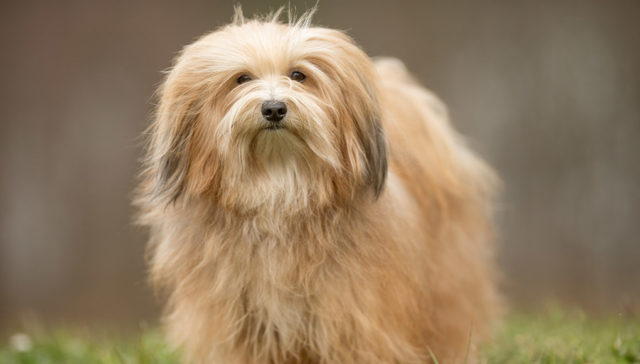
Table of Contents
Imagine being so charming that aristocrats visit a country just to get one of you. That’s right, the Havanese is so charming and irresistible that they have conquered European countries and even the USA.
Havanese have lived quite a leisurely life with aristocrats. With their small and adorable appearance, their personality won the aristocrats' hearts.
Havanese is in the toy dog category. They may be small in size, but their personality is big.
Havanese puppies are not as prickly as most toy dogs. They are open to absolutely anyone. Their goal in life is presumably befriending everyone they see.
Havanese is known as the national dog, and the only native dog of Cuba, but its popularity has reached the USA.
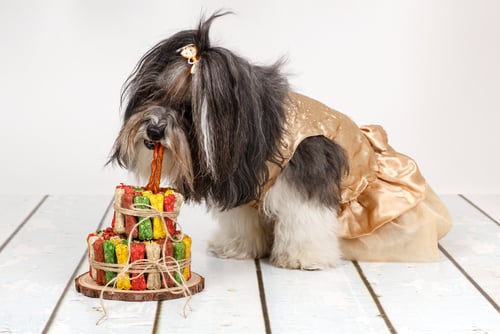
Havanese Dog Breed History
The Havanese dog breed has quite a trip in history. The Havanese’s existence was said to be found in ancient writings, vases, and statues. early 600 B.C.
They have been among humans for quite some time and from different places as well.
During the early 1600s, Spanish immigrants brought along dogs to the land of Cuba.
Among these dogs that were brought were said to be the Bichon Tenerife breed. The Havanese breed came to be from the Bichon family.
The restriction of trade has helped preserve the breed. Through the years, the dog has adapted to the warm climate.
Despite their long coats, Havanese coats have helped them secure their skin from the harsh heat.
Around the 18th century, Havana became prominent in European nations; they even took these little dogs from Cuba.
Soon enough, Havanese dogs conquered Spain, France, and England. Queen Victoria and Charles Dicken even owned a dog of this breed.
Sadly, the effect of the Cuban revolution heavily affected this breed. Along with people’s fear of death came Havanese’s fear of extinction.
Fortunately, some families have brought their Havanese with them while fleeing the country.
Dorothy and Bert Goodale became a blessing as they sought this breed. They were able to find six pedigrees to breed and, in time, prevent extinction.
The Havanese had multiple names before it came to this one, known also as Havana Silk Dog or Spanish Silk Poodle and quite more.
Thus, it became difficult to trace its breed history. In 1996, Havanese was finally recognized and registered in the American Kennel Club.
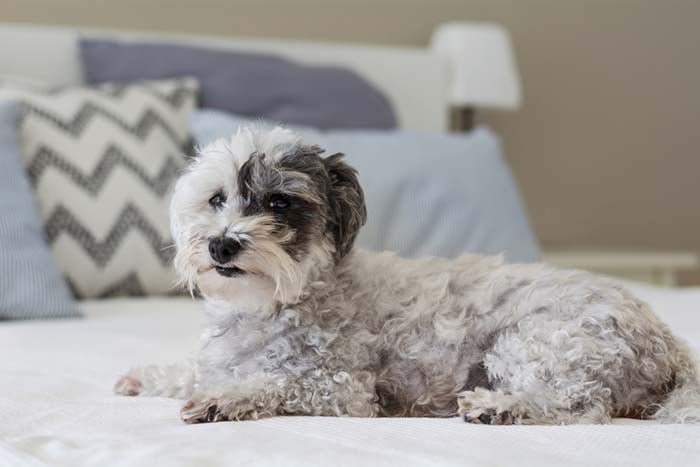
Physical Traits of a Havanese
Havanese have this childlike appearance with their gentle and innocent expression but with a hint of mischief in their eyes.
The Havanese’s eyes are usually dark brown but some Havanese have a lighter shade of it. The shape is almond-like and large, which gives them a curious expression when they look.
Their ears are quite charming with the way it folds down to the sides of their head, when their hair is untrimmed it may seem like it’s just fur encompassing their head.
Havanese’s head shape is quite broad and round, but its point to the muzzle is quite short. Their muzzle is squarish but full in shape.
Usually, the pigment in their nose and mouth are black but some brown-coated Havanese have brownish pigment on these areas too.
Their neck is quite arched, but it connects well to their body. While their chest is full and deep, it binds well with their upper body to their lower body, creating a miniature yet elegant and sleek look.
These looks may be subtle with long hair but it still gives the same expression.
They may be small in size, but they are well-muscled and compact. Their forelegs are a bit much shorter than their hind legs.
Havanese forelegs and hindlegs can carry their weight well even after vigorous activities because of the way they’re shaped.
Their tails are long and full. It is shaped and arched forward at the back, too.
Coat Color
They have a double coat as well. The Havanese have quite a lot of colors in their breed.
Some are Black, Black Brindle, Black & Silver, Black & Tan, Chocolate, Cream, Fawn, Gold, Gold Brindle, Gold Sable, Red, Red Brindle, Red Sable, Silver, Silver Brindle, and White.
Some Havanese are solid in color, and some have markings as well.
A few of the considered standard markings are Cream Markings, Irish Pied, Parti Belton, Parti-Color, Silver MArkings, Silver Points, and Tan Points.
Height and Weight
A standard Havanese dog is at least 8 ½ to 11 inches tall, weighing seven to 13 pounds.
Usually female and male Havanese sizes do not differ that much, it generally falls in the standard size.
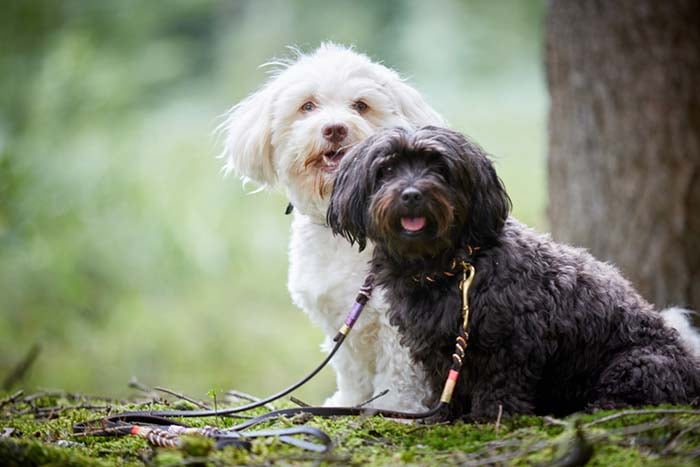
Temperament of the Havanese Dog Breed
Havanese are the ultimate family dogs. They are incredibly affectionate towards their owner or family members, not to mention they do extremely well with children, too.
Amusingly, Havanese are still quite high-spirited with strangers as well. They just want to be friends with everyone.
Havanese are natural social butterflies. They are very welcoming around other dogs. They’re the type to welcome shy dogs into their circle just by the moment they meet.
Havanese will do great in apartments or homes with backyards. As long as their daily exercise is met, they will be satisfied and happy with their living conditions.
Havanese can adapt well to their owner’s lifestyle, but it’s best to always meet their essentials as needed.
Living with a Havanese
Havanese are not recommended to be left alone at all. If owners are the type to leave for 2 hours or more, Havanese may not be the best option as their companion.
This breed has velcro personalities. They will stick around wherever their owners go.
So if owners ever plan to leave for hours or longer periods, it's best to have their Havanese dog sit by someone with whom their dog is familiar. This can lessen the anxiety and destructive tendencies instead.
Havanese are not best left outside their homes or in backyards. They are indoor dogs. If they can’t see their owners, their anxiety and the destructive meter go up.
Havanese are tremendously playful but they aren’t as energetic. Their exercise can be distributed throughout the day with brisk walks, some play at home, and even daily training.
Keeping their mind sharp is important, so activities that are mentally stimulating should be more given.
They do not do well as watchdogs. As you may see, they are social butterflies that befriend indiscriminately.
Some Havanese may display timidness or aggressiveness, but that’s rarely the case. Havanese are bred to be companion dogs. That’s why they’d do well as therapy dogs.
Havanese are very vocal dogs, but only when they deem it necessary. They're the type to get attention or argue over something with their owner, but the next, they’ll be seen sleeping or playing with themselves.
Havanese are best in warmer seasons, but they can tolerate cold seasons as well.
Training & Exercise
Havanese are well-trainable. They respond best to positive reinforcement and praise. Training Havanese at a young age is quite important.
Not only are they mischievous, but they are intelligent too. Using this to topple and nip at everything may only be the beginning of their tricks.
Introducing and exposing them while they are young to a variety of people, places, animals, or situations can help them recognize and practice social behavior.
As long as they are guided and accompanied, they will be welcoming and confident enough in no time.
Since they will require a lot of mental stimulation, training them in commands and using puzzles or hide-and-seek activities is best for them.
Making training innovative, creative, different, and fun will make them cooperate more than ever.
Havanese do not need vigorous daily exercises. They are satisfied with daily walks or just stress-reducing sniffing time outdoors, or maybe even playtime in the backyard.
As long as they can release their energy daily, it is enough to satisfy their exercise needs.
It is important to check on them when exercising. Havanese are prone to cardiovascular disease and dysplasias, so it’s important to keep in mind their condition when they’re out and about.
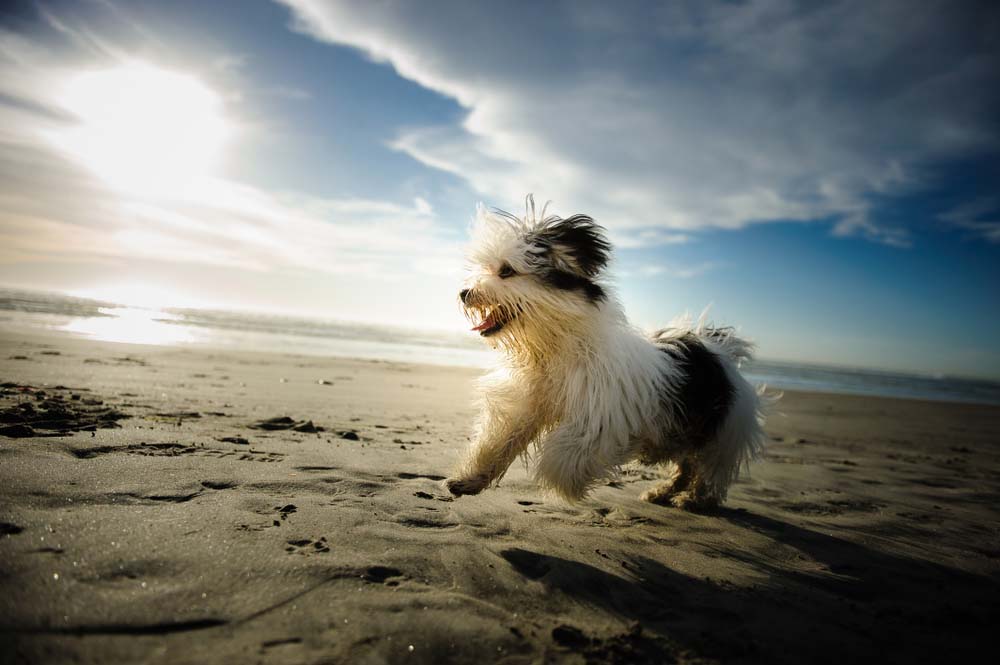
Health Care of the Havanese Dog Breed
Havanese have a long life expectancy. They can live up to 14 to 16 years.
They are generally a healthy breed, but there are diseases that they may acquire throughout the years.
- Chondrodysplasia
- Deafness
- Heart Murmurs
- Legg-Calve-Perthes Disease
- Patellar Luxation
Chondrodysplasia Disease
This is also known as dwarfism. Chondrodysplasia is the growth disorder of the cartilage, resulting in the disproportionate length of the limbs.
Symptoms include a larger head, enlarged joints, bowing of forelimbs, undershot jaw, and plenty more.
Dogs that are diagnosed with this may develop other joint-affiliated diseases like arthritis.
It’s important not to breed dogs with these conditions as they are finding that they have a shorter life span than the average of their breed.
Although treatment is unlikely, preparation and awareness are much more helpful options.
Assisting dogs living with this condition is a much more helpful way to deal with the disorder.
If owners suspect their Havanese may have Chondrodysplasia, it’s best to have them checked immediately for further instructions needed.
Deafness
Deafness in dogs may depend if it is acquired through trauma, infection, or other underlying diseases or it can be congenital.
Although it isn’t as prevalent with other breeds, deafness is congenital in the Havanese breed.
If the owner suspects their Havanese is deaf, they should have it checked and tested with their veterinarian. There, they will be able to figure out if it’s bilateral or not and the grade of deafness with their dog.
Disabled dogs may require more assistance but do not mean they will do less for their owners.
It’s important to take care of these creatures more than ever. To anyone’s surprise, these can bring even more soul into your life.
Heart Murmur
A heart murmur is a condition where blood flow in the heart is turbulent, this can range from Grade 1 to Grade 6 which will determine if it’s an innocent to a fatal condition.
Symptoms are irregular heartbeat, easily tiredness, excessive panting, fainting, and plenty more.
Although not all that are diagnosed mean it is fatal, some may even survive years after being diagnosed.
Check-up and test should be done if the owner suspects their Havanese to have one. Treatment may depend on the grade of the condition.
It’s still best to get the Havanese dog checked up regularly and immediately if symptoms are found. It is also best not to breed dogs with these conditions to avoid spreading the disease.
Legg-Calve-Perthes Disease
Also known as aseptic necrosis of the femoral head, Legg-Calve-Perthes disease is the loss of blood supply in the ball at the tip of the femur, which causes it to break down inside the hip joint.
This is an incredibly painful disease and may need surgery for treatment.
Sadly, it is an inherited disease and can be spotted while they are just months old. Limping and visible distress can be pronounced symptoms.
It is best to have Havanese checked and tested regularly for this disease. Prevention and reducing risk are the responsibility of owners.
Patella Luxation
Patella Luxation is the patella shifting alignment out of the femur. This can range from high to low levels of luxation, and each requires different treatments.
Symptoms may include skipping and kicking off the leg. It’s best to consult with the veterinarian for treatments, therapies, or procedures required to help Havanese with this condition.
Remember not to breed Havanese dogs who have these diseases. It’s best not to bring these despairing conditions to other dogs.
Adopting a Havanese from a reputable breeder is the best option to ensure less risk of diseases and future inherited conditions.
If the owner ever plans to adopt from somewhere else, we highly recommend having it checked and tested with the veterinarian as soon as possible.
Other than that, it’s best to meet the requirements for Havanese Dogs. It’s a big help to keep their health intact and of course, make them happy.
Even if they are physically healthy, it’s best to get them their regular check-up to see if there are any changes or improvements needed.
Diet of a Havanese Dog
Havanese have some diet restrictions owners should be keen on. Since Havanese are prone to weight gain, it’s important to watch out for foods that may affect their health and weight carefully.
Treats and table scraps are to be limited or given in very small amounts. It’s best to avoid foods with high fat content and processed and cooked bones as well.
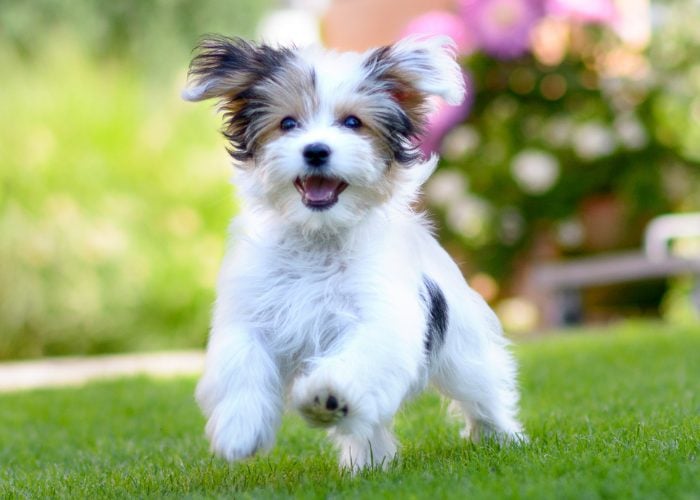
Grooming of Havanese Dogs
Havanese have a double coat that helps them regulate body temperature through changes in seasons. But as times passed, Havanese became more tolerant of warmer seasons.
Their double coat should be soft and light from the inner to the outer coat. Their coat is full and wavy but flows well with movement.
Since Havanese has a double coat, it will shed greatly during warmer seasons.
But, Havanese do require daily brushing, especially those who have kept their long hair, to keep it from grime, mats, and tangles.
It might not be as extensive of a grooming regimen if grooming is treated as bonding time with them.
Maybe after warning them of playtime or exercise while resting or relaxing, owners can brush their hair.
Should owners decide to trim their Havanes’s hair shorter, it still requires daily brushing to reduce their fur shedding all over the place.
Some owners have their Havanese coat into cordings, similar to dreadlocks in human hair. Cording helps regulate temperature during harsh cold weather.
Some dogs may naturally obtain the cording, but the Havanese may require some help to achieve it.
Trimming their nails won’t be a problem if they are exposed at a young age. It can be done after playtime as well when they’re more relaxed. It will be done in no time, but do be careful in trimming black nails.
It’s important to have their ears dry and clean after baths, especially since their ears drop down and may not get the air they need to dry out. Leaving their ears with moisture may cause ear infections.
They are less likely to drool, so there’s no worry about carrying towels for their mouths.
But of course, wiping their fur after drinking water may help the hair around it stay clean.
Frequently Asked Questions about Havanese Dogs
Are Havanese Dogs high maintenance?
Havanese dogs require a careful diet and daily grooming. They may be generally healthy dogs, but they will still need help from their owners in doing so.
Havanese can be mischievous and playful. They may disregard a ‘no’ and consider it as playtime if not trained early.
It’s best to have them trained or be careful with the food around them.
It’s also best to brush their fur daily to keep their coat and skin healthy in shape. They may not require frequent bathing but the crushing is important to keep mats and tangles from happening.
Can a Havanese be left alone for 8 hours?
No, Havanese dogs are companion dogs. They thrive on human interaction.
It’s best to have them sit in a daycare or, better, with someone they know.
Leaving them behind for long periods may cause them anxiety and destructive tendencies.
Havanese may be great with apartment living, but they're no good at being alone. They are best with families or owners who rarely leave the house with no one home.
Are Havanese aggressive?
Havanese dogs are rarely aggressive, but they are a naturally mischievous breed. They are known to try to make everything playtime with their owners.
So it’s best to get them trained while they are young. This can help them recognize their owners, commands, and situations much more easily.
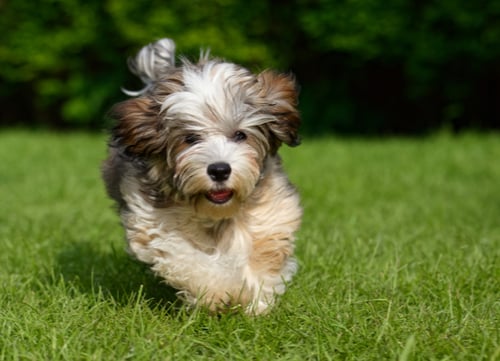
Havanese Dog Breed Summary
As you can see, if you feel that the Havanese is the perfect dog for you, you can ask a veterinarian for more questions regarding if they are compatible with your living conditions.
Havanese may be a bit of a high-maintenance concern regarding grooming and diet, but other than that, they are great companion dogs.
Even with their small size, their personality makes a big go for it. If you’re looking for a compact companion dog, Havanese is the perfect match for you.
Remember, do adopt a Havanese from a reputable breeder. It’s best to get dogs that are tested and safe to prevent the spreading of hereditary conditions that may affect the dog's life.
Have your Havanese puppy regularly checked or immediately tested if they are experiencing any suspected conditions.












